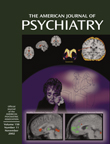Don’t buy this book for its title but, rather, for its subtitle—Behavioral Approaches to Analysis and Treatment. Had I been aware of the subtitle when asked to review it, I might have declined—after all, I’m a dyed-in-the-wool psychopharmacologist (albeit an open-minded one). On the other hand, since the audience for the book, according to its editors, includes “researchers, practicing clinicians, and persons or parents of persons with the disorder,” I decided I fit in somewhere and therefore accepted the offer. I am glad that I did.
This is a book about habit reversal for treating tic disorders, trichotillomania, and other repetitive behavior disorders (the latter consisting of oral-digital habits, oral-motor repetitive behavioral disorders, and repetitive behavior disorders associated with developmental disabilities). Other behavior therapies are also discussed, but the main focus is clearly on habit reversal because of its “robustness, accessibility, and wide applicability.” This treatment approach, developed several decades ago by Azrin, has the potential for doing great good for those who suffer from these disorders.
I won’t quibble about the effectiveness and wide applicability of habit reversal, but I must question its accessibility. Despite the established effectiveness of behavior therapy for a wide variety of psychiatric disorders (at times surpassing that of pharmacotherapy), there appears to be a paucity of well-qualified behavior therapists, let alone well-qualified habit reversal therapists, to administer these procedures. Perhaps this is not the case within the bailiwicks of the chapter authors, most of whom are associated with departments of psychology (although their credentials are unclear, since degrees and academic titles are not provided), but it is certainly true out there in the wide, wide world.
But I digress. The book is laid out nicely. Several introductory chapters set the scene by providing an overview of assessment approaches and admonitions not to trivialize these disorders—they are physically and socially quite disruptive. The midsection of the book is its strength—nine chapters, three each devoted to tic disorders, trichotillomania, and oral-digital habits (these include finger sucking and nail biting). (Unfortunately, the book does not deal with naso-digital habits.) For each condition, there is a chapter on characteristics that includes diagnosis, demographics, comorbidities, and etiologies. Next comes a chapter overviewing behavioral interventions for the condition (and as an added bonus, the tic and trichotillomania chapters also include brief, up-to-date, and fairly balanced sections on pharmacological interventions). The final chapter of each of these sections gets down to the nitty-gritty—the habit reversal treatment manual for dealing with the disorder. Herein lies a step-by-step protocol for applying habit reversal to the treatment of repetitive behavior disorders. Reading these chapters gives one a firm grasp of the procedure, an understanding of its applicability, and an appreciation of its complex simplicity (it seems overwhelming until broken down into its component parts). One will also recognize that time and tedium are involved in the implementation of habit reversal and surmise that its success requires a unique matchup of patient and therapist.
The book does not end at this point but continues with a chapter on oral-motor repetitive behavior disorders (stuttering, bruxism, and rumination). Although the focus is on behavioral treatments, the authors very appropriately avoid the unwarranted conclusion that these disorders must, therefore, have psychological etiologies. Instead, their etiological considerations provide a reasonable blend of genetic, organic, and environmental factors. The final chapter tackles the challenge of treating repetitive behavior disorders in those with developmental disabilities. Three case examples are provided to illustrate how potentially effective treatment programs might be developed. The methodologies presented seem promising, but no outcome data are provided to confirm their effectiveness.
Where does all this leave us? The book itself is well written and edited with a strong sense of continuity throughout. The chapters have a greater breadth and balance than I would have expected in a book focused mainly on habit reversal therapy. The authors present thorough literature reviews supported by timely references to the varied behavioral approaches for treating repetitive behavior disorders. I learned a lot from reading it. It is rather disturbing that effective treatments such as habit reversal are underused in contrast to relatively ineffective treatments (such as relaxation therapy) that get greater press and considerably wider usage. On the other hand, I doubt that it will appeal to the vast majority of Journal readership, who seem to have a much more time-urgent, pharmacological focus on life.

